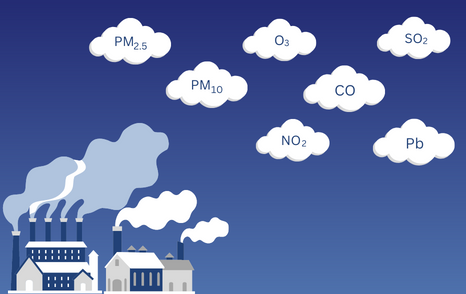What Air Pollutants Does DEP Monitor?

Criteria Pollutants
The six criteria pollutants monitored by NJDEP are:
- Ozone (O3)
- Particulate matter (PM2.5 & PM10)
- Nitrogen dioxide (NO2)
- Sulfur dioxide (SO2)
- Carbon monoxide (CO)
- Lead (Pb)*
These six pollutants are common and widespread. They are known as criteria pollutants because they have National Ambient Air Quality Standards (NAAQS), set at a level protective of human health and welfare. The standards are established by the U.S. Environmental Protection Agency (USEPA). Monitoring is carried out by state, local and tribal governments to determine whether the standards are being met. If an area does not meet one or more of the NAAQS, it is designated by USEPA as a “non-attainment area” and the state must develop a plan of action to meet the standard.

Air Toxics
Air toxics are any chemicals (aside from the criteria pollutants*) released into the air that have the potential to cause adverse health effects in humans. These effects cover a wide range of conditions, from lung irritation to birth defects to cancer. There are no National Ambient Air Quality Standards (NAAQS) for these pollutants, but the 1990 Clean Air Act Amendments created a list of almost 200 of them and labeled them Hazardous Air Pollutants (HAPs). The U.S. Environmental Protection Agency (USEPA) has developed control technology standards for specific categories of sources that emit the HAPs.
NJDEP monitors a number of air toxics, including benzene, toluene, ethylbenzene, xylenes, and black carbon. These are emitted by motor vehicles and other common sources.
* NOTE : Lead is both a criteria pollutant and a Hazardous Air Pollutant (HAP).
Information on levels of criteria pollutants and air toxics in New Jersey can be found in the annual Air Quality Report.